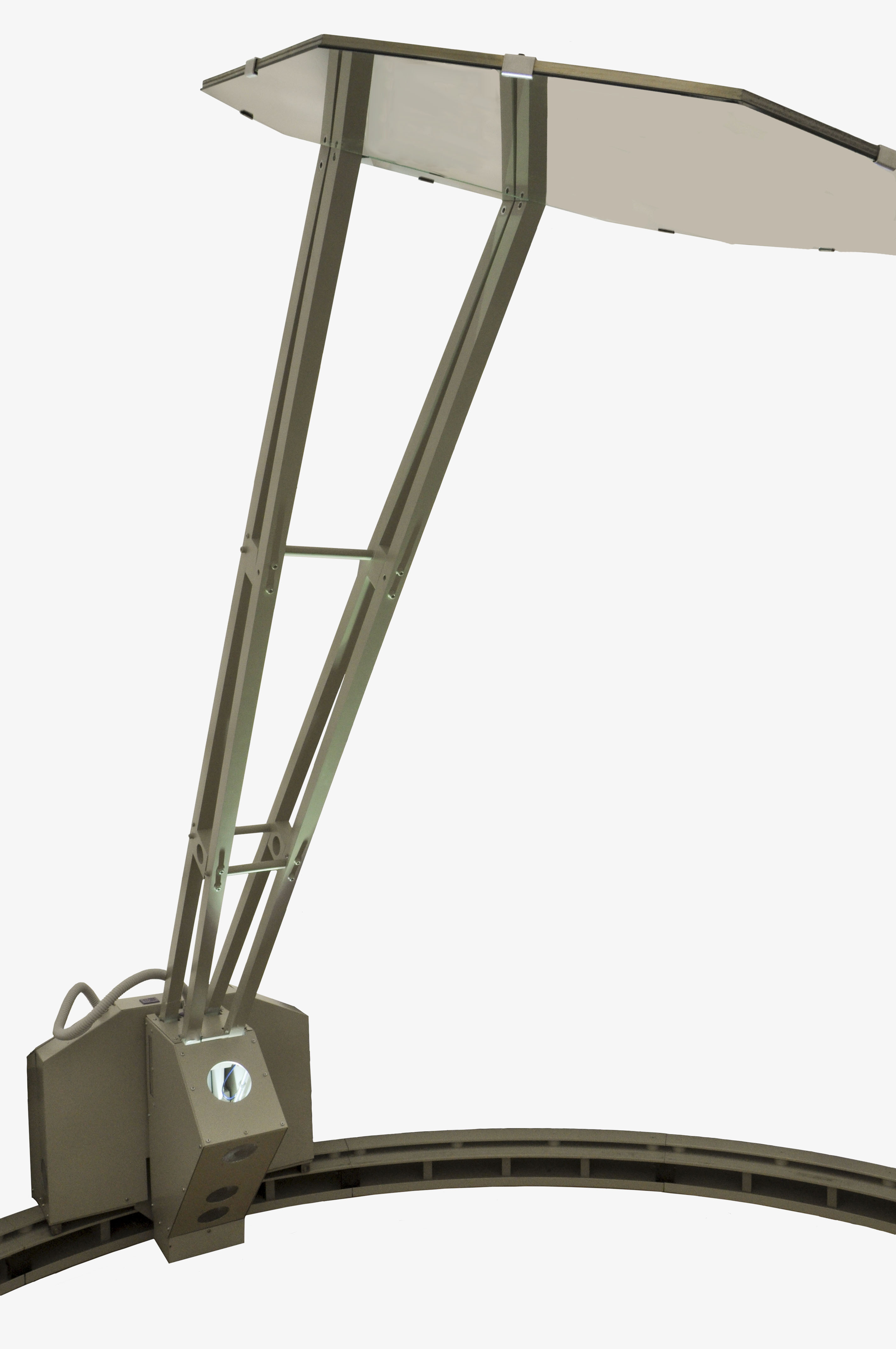Heliodon
Robotic and manual heliodons for education, design and research
Our broad range of heliodons, automatic and manual, are designed to make fast and accurate evaluations of daylighting performance of your models under the sun.
Robotic with fixed light source

The robotic heliodons with fixed light source are the most accurate. They are computer controlled and place the scale model at the right position relatively to the fixed light source with the help of a robotic platform.
Robotic heliodons are the most common in design and research and development laboratories.
Manual

The manual heliodons are used for education and for design studies. Their accuracy is pretty limited but the intuitive operation make them a successful tool to learn and practice the principle of daylighting and in particular the sunshade analysis.
Manual helidons are immediate to operate and easy to understand.
Robotic with fixed model

The robotic heliodons with fixed model are very easy to operate because the scale model remain fixed on a table (it can be heavy and large) and the source moves around it.
They are ideal to be used for presentation and design and they make easy to show to a group of people the play of light and shadow on your scale model. They facilitate the individual exploration of the model because people can move autonomously around and inside it.
Complex geometries and difficult to model materials (e.g. sandwich of glass and metal coated surface) can be analyzed with easy and in real time under the heliodon. The models can be a part of a real fenestration system or scale model of a building or a part of urban environment.
From bachelor students to specialized daylighting analysts use the heliodon to understand the complex relationship between geometries, materials and the variation of the sun light in the time.
Several accessories are available to increase your productivity with the heliodon:
- micro photo cameras;
- endoscopic video cameras;
- a semi-automatic alignment system for setup;
- luxmeter heads;
- data logging system.
The accuracy of the simulations achievable depends on the type of heliodon. The accuracy is mainly affected by:
- collimation of the incident light beam;
- tolerance angle between the position of the model and the light source.
Orange Heliodon is the more accurate, then Tulip Heliodon and the least accurate, but at the same time the simpler to use and easier to understand, is Orchard Heliodon.
For a more comprehensive evaluation of the daylighting performance of models under all types of sky is required an artificial sky (e.g. Kiwi — one patch —, Dragon — one sixth vault —, Durian — full dome with 60% coverage —, Papaya — full dome with 100% coverage —) with integrated heliodon (or Solar Simulator for the research and development laboratories).